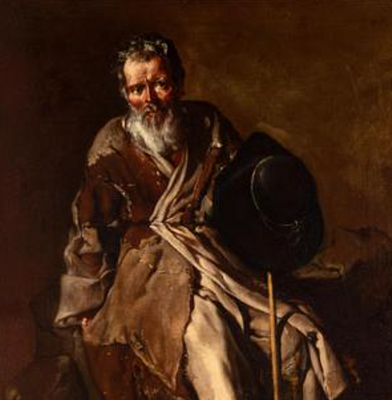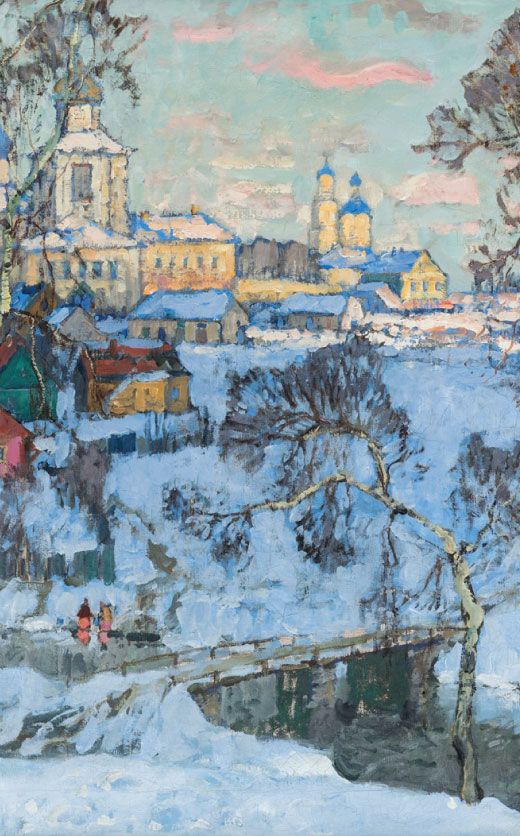Circle of ALONSO DEL ARCO, XVII century (Madrid, 1635 - 1704). "Virgin of Solitude with Antonio Abad", 1612. Oil on copper. Dated on the back.
Lot 60
About Seller
Setdart Auction House
Carrer Aragó 346
Barcelona
Spain
Setdart Subastas was born in 2004 and is currently the first online art auction in Spain with solidity, prestige and reliability guaranteed by our more than 60,000 users. Setdart has a young, dynamic and enterprising team ready to successfully manage the purchase and sale of art works through custom...Read more
Estimate:
EUR€4,500 - EUR€5,000
$4,838.71 - $5,376.34
Absentee vs Live bid
Two ways to bid:
- Leave a max absentee bid and the platform will bid on your behalf up to your maximum bid during the live auction.
- Bid live during the auction and your bids will be submitted real-time to the auctioneer.
Bid Increments
| Price | Bid Increment |
|---|---|
| EUR€0 | EUR€10 |
| EUR€200 | EUR€25 |
| EUR€500 | EUR€50 |
| EUR€1,000 | EUR€100 |
| EUR€3,000 | EUR€200 |
| EUR€5,000 | EUR€500 |
| EUR€10,000 | EUR€1,000 |
| EUR€20,000 | EUR€2,000 |
| EUR€50,000 | EUR€5,000 |
About Auction
By Setdart Auction House
Jun 1, 2021
Set Reminder
2021-06-01 09:45:00
2021-06-01 09:45:00
America/New_York
Bidsquare
Bidsquare : OLD MASTERS & SCULPTURE - Day 2
https://www.bidsquare.com/auctions/setdart-auction-house/old-masters-sculpture---day-2-6999
Setdart Auction House sofia@setdart.com
Setdart Auction House sofia@setdart.com
- Lot Description
Circle of ALONSO DEL ARCO, XVII century (Madrid, 1635 - 1704). "Virgin of Solitude with Antonio Abad", 1612. Oil on copper. Dated on the back. Measures: 23 x 15 cm; 26 x 18 cm (frame). Baroque painting of Madrid school, very close to the work of Alonso del Arco, of whom are preserved Virgins of the Solitude that follow this same compositional model: the praying Virgin, standing, in silver niche embossed with cherubs and mandorla type border. In this case she is accompanied by Saint Anthony Abbot, the founder of the eremitic movement, holding in his hands a cartouche with the legend "charity". Stylistically, the emphasis on drawing is balanced by a precise tonal work that highlights the variety of textures and qualities, of clothing, flesh tones and liturgical objects. Our Lady of Solitude is a variant of the advocation of the Virgin Mary of the title of Our Lady of Sorrows. The model, instituted by Gaspar Becerra in his Virgen de la Soledad del convento de la Victoria, gave rise to a characteristic and uniquely Spanish iconography of this advocation that spread throughout the Christian world. However, it has its roots in the diffusion throughout Europe of the cult of Our Lady of Sorrows, since the Solitude of Mary is the last of the Seven Sorrows of the Virgin Mary. Alonso del Arco was a painter from Madrid in the late seventeenth century, a disciple of Antonio de Pereda and deaf from birth, so he was known as "el sordillo de Pereda". Although he began painting in a style very close to that of his master, he soon distanced himself, evolving towards more advanced Baroque forms. Palomino highlighted his gifts as a portraitist, mentioning the series of generals of the Orders of San Juan de Dios and the Merced Calzada, although few portraits by his hand have been preserved to this day. Nevertheless, in his religious works one can appreciate this facility for portraiture, as we can see in the busts of saints in ovals that occupy the intrados of the altar arch of San Felipe Neri in the Trinitarias Descalzas in Madrid, one of his most important works. Likewise, in 1679 he collaborated with Claudio Coello, José Jiménez Donoso and Matías de Torres, among others, in the ephemeral decorations for the entrance into Madrid of María Luisa de Orleans, despite all this, his main theme was religious, which he cultivated for temples in Madrid, Toledo and Valladolid. He used Flemish engravings as a base for many of his compositions, something that was criticized by Palomino himself, but which helped Alonso del Arco to work faster and at a lower cost.works by his hand are currently preserved in the Prado Museum, the Santa Cruz Museum in Toledo, the Lázaro Galdiano Museum in Madrid, the Fine Arts Museum of Asturias and other public and private collections.
- Shipping Info
-
In-house shipping available. Please inquire at admin@setdart.com.
-
- Buyer's Premium



 EUR
EUR CAD
CAD AUD
AUD GBP
GBP MXN
MXN HKD
HKD CNY
CNY MYR
MYR SEK
SEK SGD
SGD CHF
CHF THB
THB
















